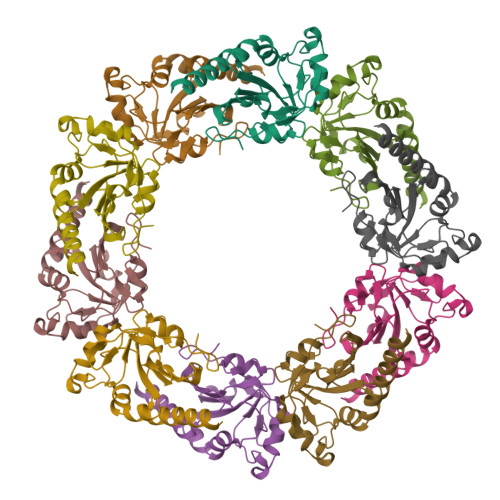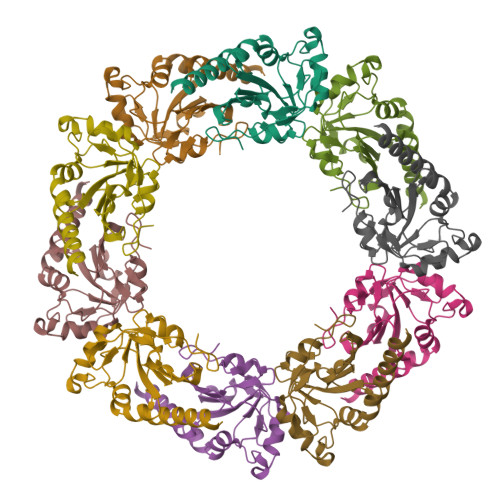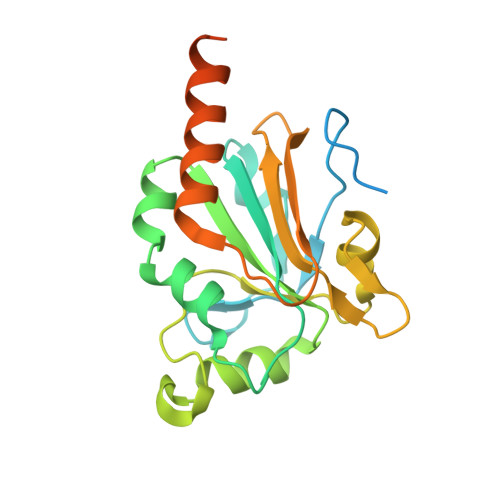Chaperone activation and client binding of a 2-cysteine peroxiredoxin.
Teixeira, F., Tse, E., Castro, H., Makepeace, K.A.T., Meinen, B.A., Borchers, C.H., Poole, L.B., Bardwell, J.C., Tomas, A.M., Southworth, D.R., Jakob, U.(2019) Nat Commun 10: 659-659
- PubMed: 30737390
- DOI: https://doi.org/10.1038/s41467-019-08565-8
- Primary Citation of Related Structures:
6E0F, 6E0G - PubMed Abstract:
Many 2-Cys-peroxiredoxins (2-Cys-Prxs) are dual-function proteins, either acting as peroxidases under non-stress conditions or as chaperones during stress. The mechanism by which 2-Cys-Prxs switch functions remains to be defined. Our work focuses on Leishmania infantum mitochondrial 2-Cys-Prx, whose reduced, decameric subpopulation adopts chaperone function during heat shock, an activity that facilitates the transition from insects to warm-blooded host environments. Here, we have solved the cryo-EM structure of mTXNPx in complex with a thermally unfolded client protein, and revealed that the flexible N-termini of mTXNPx form a well-resolved central belt that contacts and encapsulates the unstructured client protein in the center of the decamer ring. In vivo and in vitro cross-linking studies provide further support for these interactions, and demonstrate that mTXNPx decamers undergo temperature-dependent structural rearrangements specifically at the dimer-dimer interfaces. These structural changes appear crucial for exposing chaperone-client binding sites that are buried in the peroxidase-active protein.
Organizational Affiliation:
Department of Molecular, Cellular and Developmental, University of Michigan, Ann Arbor, 48109-1085, MI, USA.
















